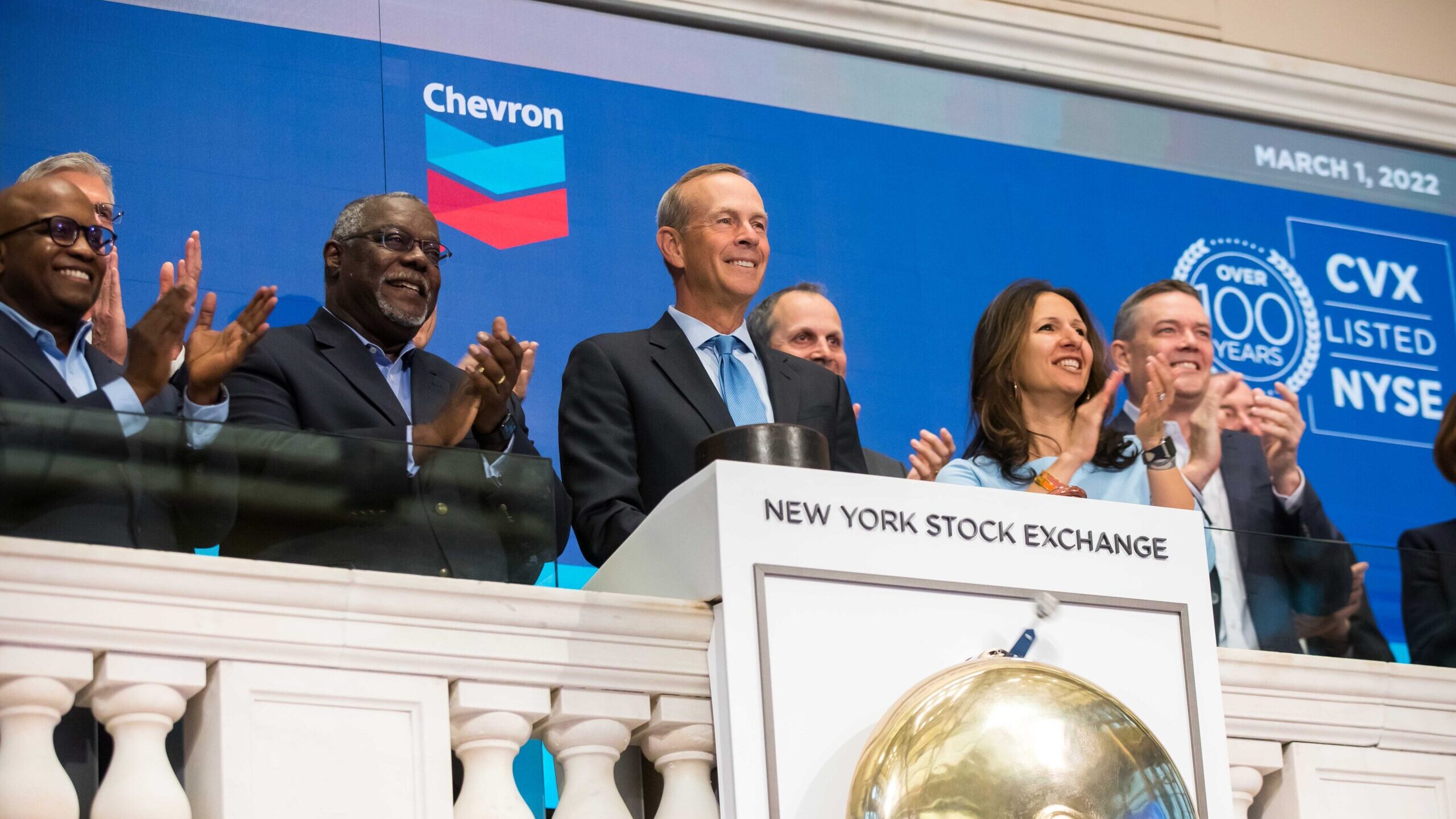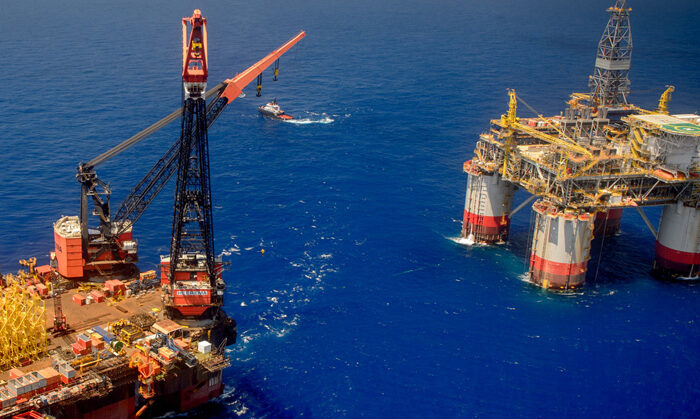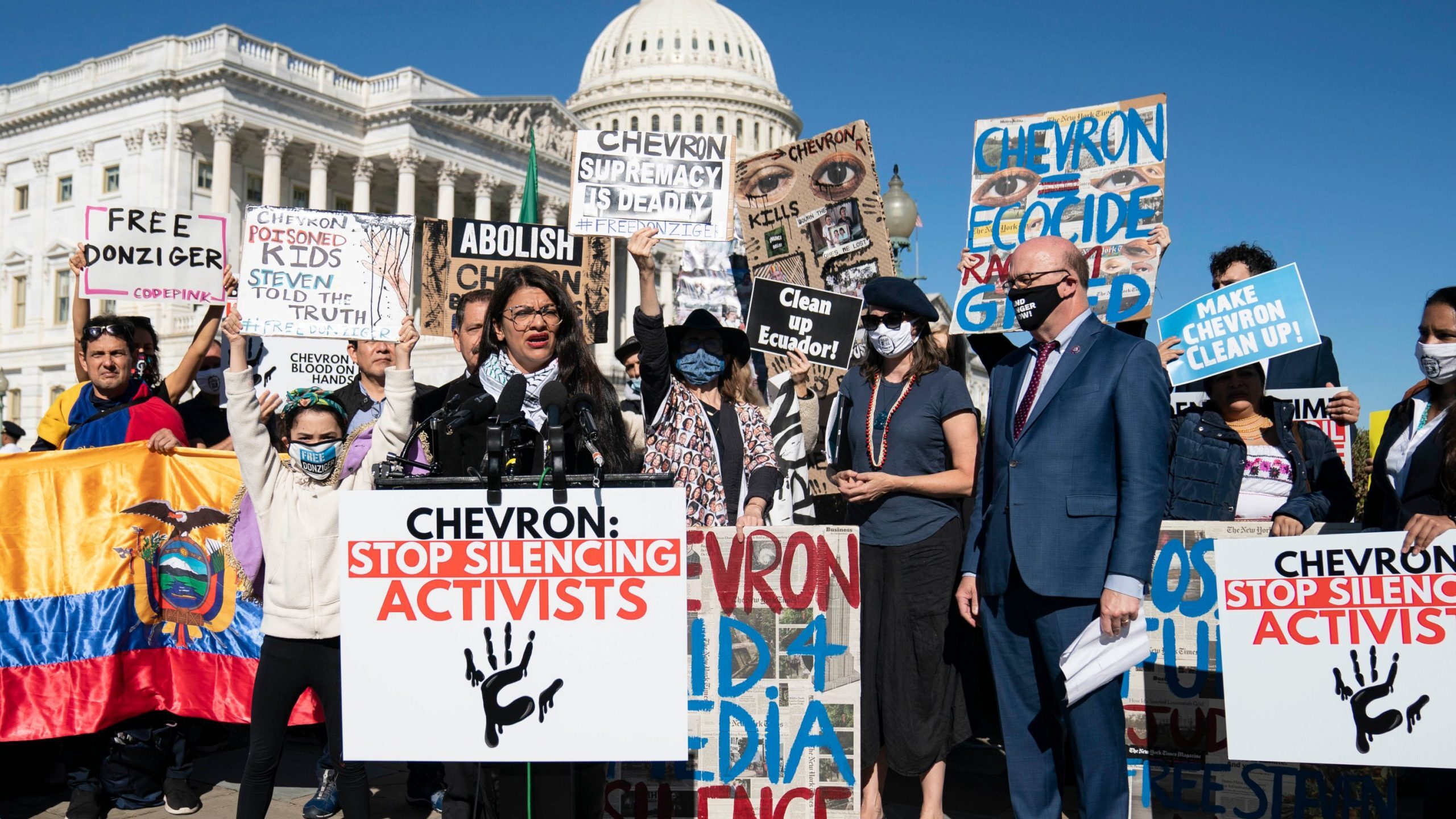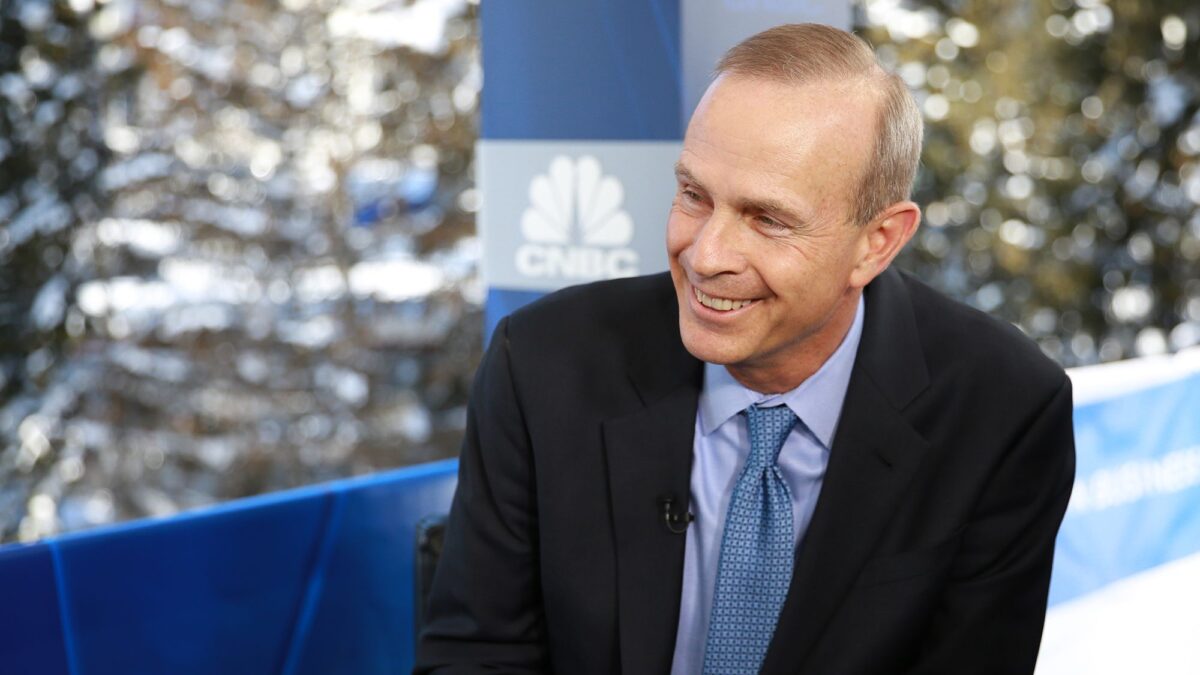Chevron CEO Michael Wirth’s brass knuckle journey to net zero.
Seizing on an unexpected moment, Wirth proudly champions Chevron’s unwoke energy future.
Editor’s note: In a follow-up to our recent article on beta and shareholder activism, and as we enter the annual shareholder proxy season, we are profiling three poster companies of old-style American capitalism: Berkshire Hathaway, JPMorgan, and now, Chevron.
Annual general meetings (AGMs) of shareholders are opportunities to elect directors, ask questions and make business requests on myriad matters, like executive compensation, governance, climate, capital allocation, racial justice, and more. The “proxy season” refers to that cluster of AGMs, which occurs in April, May, and June. As it is impractical for most shareholders to attend in person, they fill out a “proxy,” which is then voted on their behalf at the AGM.
Last March, Chevron Corporation Chairman, and CEO Michael Wirth was all smiles as he looked across a roomful of bank analysts gathered for the company’s investor day at the New York Stock Exchange.
“You know what to expect from us. We have a formula that works,” Wirth said. “Our strategy is straightforward: Lead in traditional energy. Lead in lower carbon. Higher returns, lower carbon. All with the overarching goal to sustain financial performance in a lower carbon future.”
There is nothing like $110 a barrel of oil to put the swagger back into America’s maverick oil industry. Much of the fossil fuel industry is on a roll. But none have the confidence — and smirk — of America’s most politically powerful energy company.
The war in Ukraine is giving Chevron a once-in-a-lifetime opportunity to lock in oil and gas production for generations.
Wirth has a reason to be smiling like a Cheshire cat. The company’s stock is at an all-time high. Cash from oil and gas operations is washing in over the gunnels. Climate activists are on the defensive. Asset managers like BlackRock are rushing away from previous bold climate statements. Biden’s ambitious Build Back Better climate plan is going nowhere in Congress. And the war in Ukraine is giving Chevron a once-in-a-lifetime opportunity to lock in oil and gas production for generations.

Michael Wirth and team at the NYSE, March 2022. Photo: NYSE
Yesterday’s stranded assets are today’s pot of gold. If Exxon, the world’s largest oil company, had near heart failure during last year’s annual shareholder proxy season, this week, Chevron barely broke a sweat swatting away pesky resolutions like gnats.
It scored a PR victory, supporting a shareholder initiative urging the company to improve its reporting of methane emissions, something it will be mostly required to do anyway with the new proposed EPA and SEC rules. On other resolutions and other matters, it seated all of its nominated directors and scored a decisive victory over climate advocates when nearly two-thirds of Chevron shareholders investors rejected a proposal for the oil giant to align its climate strategies with the Paris Agreement.
Unlike other oil & gas majors who say they are “decarbonizing”, Chevron is doubling down on 140 years of oil and gas production.
There is no hint of compromise in its letter to proxy shareholders — and little mention — of climate. Unlike other oil & gas majors who say they are “decarbonizing” or shifting into non-carbon renewables like wind and solar, Chevron is doubling down on 140 years of oil and gas production. “The future of energy is lower carbon,” he said, bluntly adding, “Chevron is on a different path than others in this industry.”
It’s a bold and defiant rebuttal to the nattering nabobs of climate negativity. “We believe profound challenges can be overcome with human ingenuity, and we intend to demonstrate this with Chevron’s performance,” Wirth said. To drive home the point, he says his biggest concern was cyber security, not climate change. “While the future is uncertain, our actions are not. We’re on a path to delivering higher returns and lower carbon and rewarding our stakeholders all along the way.”
Stakeholders are on the defensive.
What a difference a year makes. Last year, the San Francisco-based activist asset manager Engine No. 1 shocked investors by unseating three directors at ExxonMobil. This year, the investment firm is all smiles. “We applaud Exxon for the strong performance and changes made over the past year.”
Now it’s shareholder activists who are on the defensive. Unexpected external economic and political shocks have caused a violent pendulum swing back in favor of natural gas and oil. Prices first rebounded after a surge of post-pandemic consumption and then soared with the start of the war in Ukraine.
The decade of fossil fuel?
And it looks like the fortunes of the oil industry will only improve. Analysts predict a possible Republican party landslide in fall elections, Washington D.C. is in regulatory and legislative lockdown and a once confident environmental movement is frozen in shock. BlackRock CEO Larry Fink is so concerned about his once applauded stands on “purpose” and climate that he is once again seeking the advice of his wife’s old friend, Linda Robinson, a former BlackRock board member and head of communications.
All of this would have been impossible to believe even six months ago. So too is the emerging idea in cities like Houston, Dallas and Tulsa that, contrary to public opinion, the 2020s will be the decade of fossil fuel, albeit of lower “intensity.” Think light natural gas versus thick black bunker oil.
Victory in hand, Wirth appears to be sitting in the catbird’s seat. The catbird is a popular bird that perches across North America on enviable, secluded and powerful branches, varying its song in an array of mocking calls.
Will Wirth still be smiling and mockingly singing throughout the AGM in the several years to come?
But how long can Chevron hold on to this newfound mojo? Will Wirth still be smiling and mockingly singing throughout the AGM in the several years to come? Or is he misreading the room and, despite current favorable conditions, underestimating the physical and transitional risks of climate change to future Chevron returns?
Wind and solar energy? Bah humbug
On the contrary, he is seizing this unexpected moment championing a proudly “unwoke” energy future driven by fossil fuels. By doing this, Chevron is staking out a position with investors as a sophisticated pure oil and gas play.
Chevron’s path to net zero, he says, has no place for renewable energy like wind or solar. Instead, Chevron will focus on maximizing fossil fuel profits, dabbling in low carbon energy tech such as growing renewable fuels, hydrogen, carbon capture, and offsets, and returning as much cash as it can to shareholders through aggressive stock buybacks and steady dividends. While it has announced it will triple investments ($10 billion) in clean energy like carbon capture, it plans to generate $25 billion above its dividend and capital spending over the next five years, with much of it going to stock buybacks.
“Our strategy is not to follow the Europeans,” says Daniel Droog, Chevron’s vice president for energy transition. “We’re not asking our investors to sacrifice return or go forward with three decades of uncertainty on dividends.”
However, going against conventional climate wisdom can be politically fraught. To avoid being the industry’s next bête noir, Chevron is engaged in an ambitious integrated public affairs campaign to emphasize its “human” effort to a lower-carbon energy future — and buy as much time as possible to extend the life of its oil and gas assets.
Talking a good climate game
It also talks a good climate game. It says its governance, risk management processes, and metrics align with the Task Force on Climate-related Financial Disclosures (TCFD) framework. It argues it is making measurable progress toward meeting the global net zero ambitions of the Paris Agreement. And it plans to “lead the industry” on transparent methane-emissions reporting, implement the elements of Scope 3 it likes, support (in principle) a carbon price, offer carbon offsets and invest in lower or low-carbon technologies.
Chevron produces the equivalent of about 3 million barrels of oil a day, and it sits on 11.1 billion barrels of proved reserves.

Chevron’s Big Foot operation in the U.S. Gulf of Mexico. Photo: Chevron
But that has not stopped critics of Chevron. They argue that it has contributed more than 43 billion tons of carbon dioxide equivalent into the atmosphere since 1965, according to data from the Climate Accountability Institute. Chevron produces the equivalent of about 3 million barrels of oil a day, and it sits on 11.1 billion barrels of proven reserves.
But unlike Exxon, BP or Shell, Chevron has not yet found itself as the poster boy for bad oil. Chevron’s style is very different from Exxon’s combative pugilist approach, or of its European oil counterparts, who seem to be hiding the fact that they are oil companies.
When it comes to winning the public affairs war, Chevron has a well-earned reputation of having the hardest knuckles in Washington, D.C. Its lobbyists and executives are notorious for being petulant, division-sowing. Chevron’s lobbyist, to borrow a boxing analogy, “float like a butterfly and sting like a bee.” Chevron loves to sweet tal Wall Street analysts at conferences while endlessly working the dark recesses of Capitol Hill (Wirth is the new chairman of the mighty American Petroleum Institute), while at the same time, blithely ignoring majority-supported shareholder resolutions.
Consider:
- In 2021, 61% of Chevron shareholders favored “substantial” Scope 3 emissions reductions. Chevron all but ignored the non-binding advice.
- In 2020, 53.5% of Chevron shareholders favored a proposal requiring a report on Chevron’s lobbying activities (direct and through trade associations). It only updated its lobbying website.
Unlike Exxon, BP or Shell, Chevron has not yet found itself as the poster boy for bad oil.
- It steadfastly refuses to share information about carbon costs, prices and other key assumptions, as provided by other leading oil companies, denying investors information needed to make decisions about capital allocation. It says the information is proprietary.
Petulance and half measures
It does love to agree to supposedly climate-friendly half measures with loopholes so big a supertanker could sail through. Chevron says, for example, it is committed to net zero emissions by 2050. But unlike many European peers, this aspiration does not cover “indirect” Scope 3 emissions from energy products — which exceed 93% of its carbon footprint.
And unlike Shell, BP, TotalEnergies and ENI, Chevron has no targets for absolute reductions by 2030. That’s like saying: On my diet, I promise to eat better, but not much less.
Is Wirth overplaying his fossil fuel shareholder-centric hand?
A common Chevron tactic is to be petulant and open only to partial agreements. It says it likes engaging with shareholders, but its proxy statement specifically opposed developing specially requested reports because producing them is “a poor use of Chevron’s resources.” But it then turned around and supported the shareholder resolution requesting just such a report!
What it really needs to do if it is to be taken seriously on methane mitigation, is to join The Oil & Gas Methane Partnership, a multi-stakeholder initiative launched by UNEP and the Climate and Clean Air Coalition, to be truly consistent with support of strong methane regulation and reporting.
Bravado meets climate action
Yet despite victory after victory for Chevron, neither activists, nor are the issues they champion, are going away. If anything, the list of actions is growing.

Photo: Amazon Watch
This year, Climate Action 100+ has spotlighted Chevron by “flagging” three critical climate votes of the 24 such global bellwethers actions it tracks. Following up, lobbying policy leader InfluenceMap gave the company a failing grade, finding that Chevron flunked five of seven Climate Action 100+ enumerated investor expectations while only partially meeting two.
More damning, it charges that the U.S. oil and gas sector is using the war in Ukraine to undermine the Paris-aligned climate policy.
While Majority Action’s director vote campaign against Wirth and lead director Ronald Sugar failed, it offered complete and compelling arguments.
Meanwhile, Carbon Tracker’s deep and industry-leading Paris alignment climate accounting and audit assessment is flashing a veritable sea of red, indicating failure across the board. According to Carbon Tracker, Chevron fails to integrate climate risk into its financial statements and adequately address past and pending shareholder resolutions.
Then there are the arguments of CalPERS, one of the founding six members of Climate Action 100+. It called Chevron’s bluff, by taking the extraordinary step of filing a recommendation to vote against the re-election of an additional four board directors, the members of the Public Policy and Sustainability Committee (Alice Gast, Enrique Hernandez Jr., John Huntsman, and D. James Umpleby III), explicitly for “failing to adequately respond to the Climate Action 100+ engagement initiatives.”
CalPERS’s warning to Chevron also indicates the limits of the patience among its most powerful “asset owner” institutional shareholders
CalPERS’s warning to Chevron also indicates the limits of the patience among its most powerful “asset owner” institutional shareholders, who, while historically addicted to oil industry dividends, are under increasing public, political and regulatory pressure (particularly in Europe) to accelerate decarbonization efforts.
How long can this keep going?
How long can Chevron ignore shareholder proxies, refuse to reform internal governance oversight and happily continue to play games of obfuscation and predatory delay with its public stakeholders?
A while. For now, climate progress seems at a standstill because of external factors like the crisis in Ukraine and American consumer anger over gas and food prices.
This means companies like Chevron have little incentive to compromise. Quite the opposite. They are supremely confident that their roadmap to meet net zero 2050 commitments is far better for shareholders and stakeholders than the myriad of alternative strategies.
Their only challenge is the science and the reality of mounting climate change impacts. And these are things Chevron can’t control.
Featured photo: Adam Galica, CNBC


